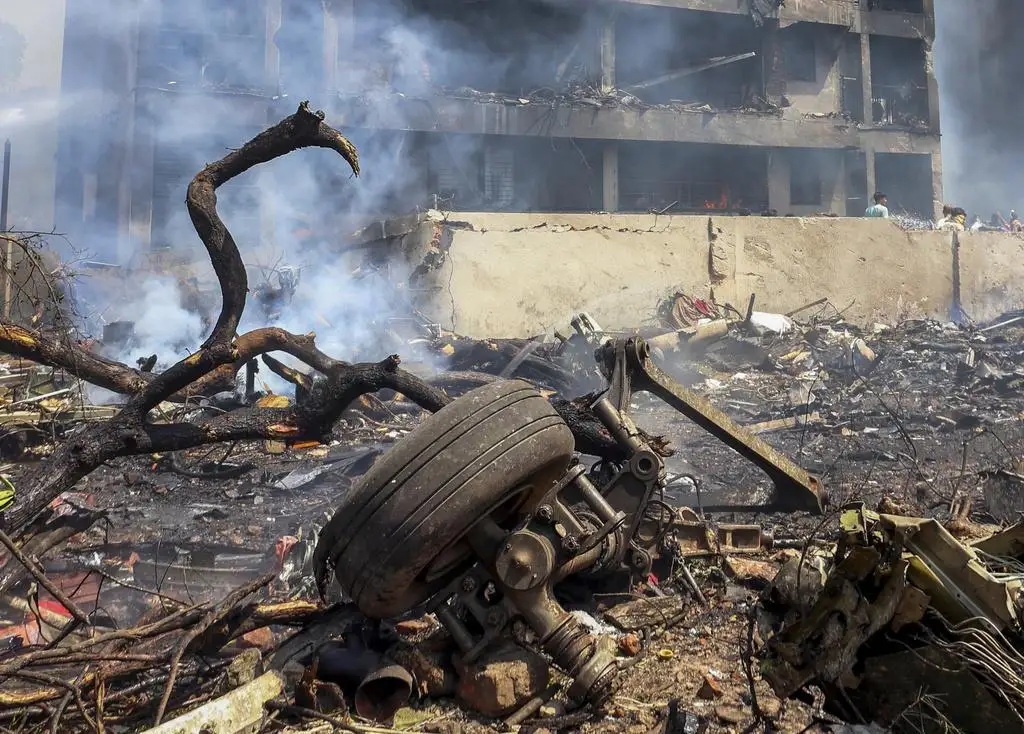
On June 12th local time, the thick smoke rising near Ahmedabad Airport in India shocked the world. An Air India Boeing 787-8 passenger plane carrying 242 people crashed shortly after takeoff, with only one surviving and all others killed. The tragedy also affected ground buildings, causing even greater casualties. When people mourn the loss of their lives, they should delve deeper into the many hidden problems behind the accident, from the loopholes in the aviation safety system to the deficiencies in emergency rescue and aftermath handling, as well as the profound impact of this incident on the Indian aviation industry and even the global aviation landscape.
From a technical perspective, the causes of accidents may involve multiple aspects. The takeoff phase is one of the most critical and complex stages in the flight process, requiring the high coordination of various aircraft systems. According to reports, the plane issued an emergency distress signal as soon as it took off, but subsequently lost contact with the ground and crashed in a densely populated residential area not far from the airport. Analysis suggests that the failure of the aircraft to take off during takeoff may be due to insufficient engine thrust, control panel failure, bird ingestion of the engine, or human error. The aircraft involved has been in service for over 11 years. Despite the advanced technology and composite materials used in the Boeing 787, prolonged service may lead to mechanical fatigue, component aging, and other issues, increasing safety hazards. In the critical few minutes before the plane crash, it remains to be determined which system malfunctioned, whether a single fault triggered a chain reaction, or if multiple problems occurred simultaneously, all of which require the deciphering of black box data and in-depth investigation.
There have been long-standing issues with India's aviation safety management system. In the past decade, India has experienced multiple serious aviation accidents, with a significantly higher accident rate compared to some developed countries. The 2022 audit report of the Federal Aviation Administration (FAA) in the United States shows that the Indian Civil Aviation Authority did not meet the standards in 23 key areas, including pilot training and maintenance inspections. This reflects the loopholes in India's aviation safety regulatory system, which have become ineffective in the process of localizing international standards.
The "golden 72 hour" rescue window period stipulated by the International Civil Aviation Organization has encountered execution difficulties in India. After the accident, the video of the plane crash quickly spread on social media, but the official press conference was delayed for three hours. This phenomenon of "civilian communication outperforming official notification" highlights the deep-seated contradictions in the emergency management system. At the rescue site, the ability of firefighting and rescue forces and medical emergency systems to respond to the crash of a large passenger plane has been questioned, and whether they can effectively rescue and reduce casualties in the first time has become a question. In terms of aftermath management, facing such a major disaster, how to properly arrange for the families of the victims, provide them with spiritual and material support, and efficiently and accurately confirm the identities of the victims, all test the ability and responsibility of relevant departments in India. Previously, India's handling of aftermath in some disasters and accidents has been criticized, and this plane crash undoubtedly once again puts these issues in front of the public.
The impact of this plane crash on the Indian aviation industry is enormous. As a well-established airline in India, Air India's reputation in the international market has been severely damaged, facing a crisis of passenger trust, and its future passenger flow and market share may significantly decline. For the overall Indian aviation industry, it may lead to a decrease in investment and a slowdown in development speed, as investors and airlines will make more cautious decisions until safety issues are effectively addressed.
From the perspective of the global aviation landscape, this accident has triggered a renewed global scrutiny of aviation safety. As a giant in the global aviation manufacturing industry, Boeing's product safety has been questioned, and its stock price plummeted before the US stock market. Global airlines will also be more cautious in evaluating the safety of the Boeing 787 model. This also prompts the global aviation industry to rethink and improve safety standards and regulatory mechanisms. Airlines and regulatory agencies in various countries may strengthen their review and improvement of aircraft maintenance, pilot training, emergency management, and other aspects, further promoting the improvement of aviation safety technology and management level.
The problems reflected behind the Indian plane crash not only concern the future of the Indian aviation industry, but also sound the alarm for global aviation safety. Aviation safety is a complex system engineering that involves multiple aspects such as aircraft manufacturing, operation management, safety supervision, emergency rescue, etc. Any negligence in any aspect can lead to catastrophic consequences. I hope India can take this opportunity to comprehensively and deeply reflect and reform, strengthen security management, enhance emergency response capabilities, and improve post disaster handling mechanisms.

With a loud bang, a nearly 30 meter high giant grain silo in Illinois, USA collapsed, and 816 tons of soybeans broke through the silo walls like a yellow torrent, instantly turning the lawn into a "golden sand dune".
With a loud bang, a nearly 30 meter high giant grain silo i…
Recently, countries such as the United States, Japan, and t…
Recently, Ukraine once again targeted the Novogorsk Petroch…
Recently, according to Reuters, European stock markets have…
In the global market recently, international oil prices and…
On October 22 local time, the US Treasury Department announ…